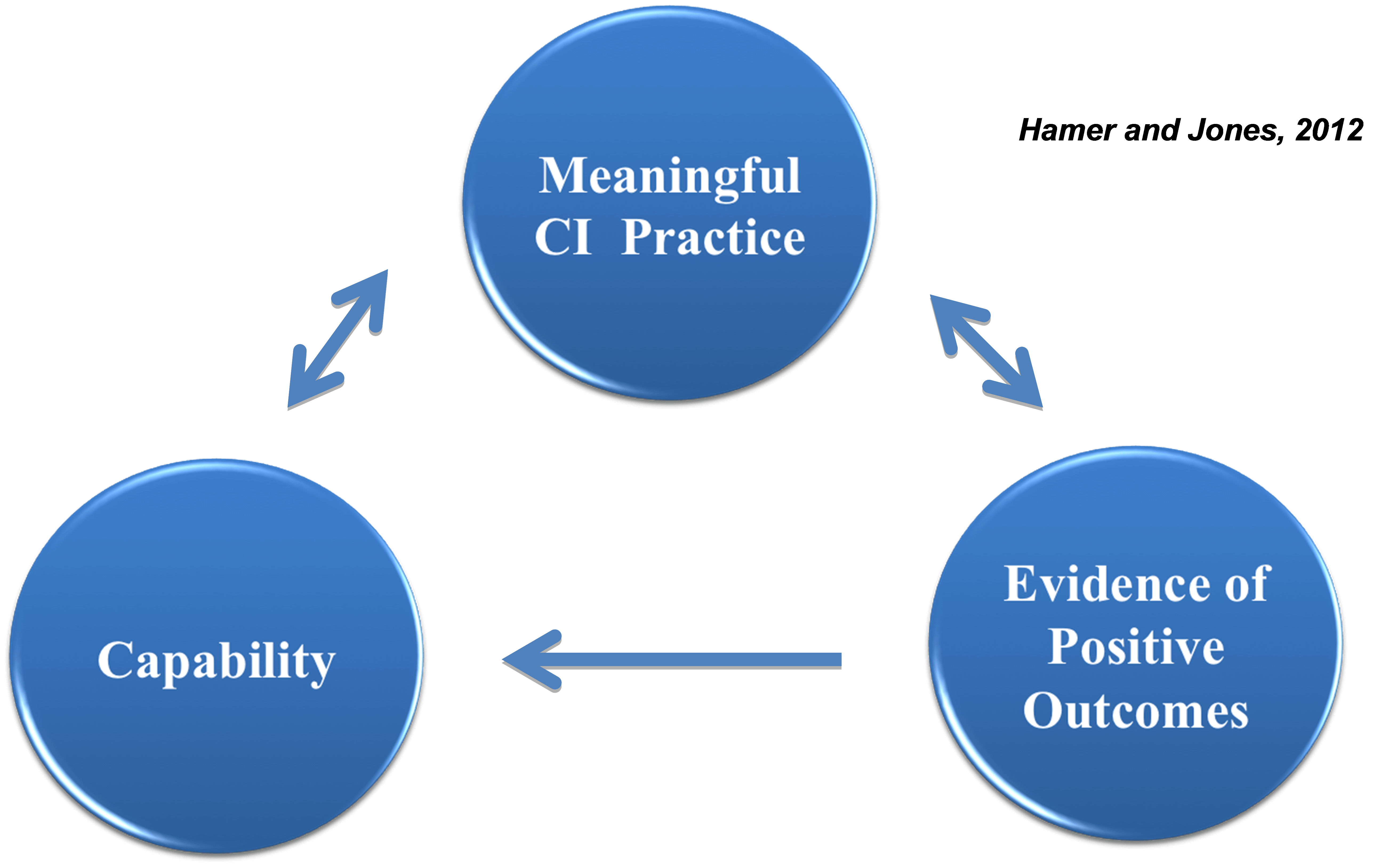Up Scope – The Look Around
Managing Risk is certainly something all leaders at all levels must learn how to master. You can create probability versus outcome matrices, Key Performance Indicators, stop light charts, risk registers, Monte Carlo probability analyses, etc. Risk Management can become very complex if you want. But, the most critical skill in risk management, especially for developing leaders, is learning how to identify the risks coming at you in the first place. Otherwise, you have the infamous “unknown unknowns” as Defense Secretary Donald Rumsfeld so eloquently put it.
I always think back about my early days on a Nuclear Submarine when I think of identifying risks. You see, one of the first things a submarine officer learns about submarine tactics is how to handle the periscope. In the days before the photonics masts and video feed controlled by a joystick and fed to multiple large video screens, there was one eyeball looking out the periscope and the hands attached to that eyeball was operating the equipment. In fact, we joked that the only piece of equipment other than a laptop that officers got to “play with” was the periscope. In the early 1990s when I was just getting started in submarines, the rules and guidance were pretty slim — don’t get counter-detected. That is, make sure the other guy doesn’t see our periscope.
Operating the periscope was an art form. Watching my Captain whip it around and take an observation on some Tin Can Destroyer charging at us and then putting the scope back down before I could even blink was amazing to me. You had to learn this art through the time honored tradition of getting your butt kicked in trainers and exercises before the Captain would even think of letting you be the Officer of the Deck in real world operations. But in the late 1990s the submarine force had some untoward events and with the end of the Cold War we were starting to operate more in shallow waters with more fishing and merchant traffic around us.
The untoward events and changing operational environment led some thought leaders in the submarine force to establish rules about how to operate the periscope. I happen to be on a submarine as a Department Head when the draft of these rules came out and we were asked to test them out and provide feedback. At first I will admit I had a poor reaction. At this point I had been in the Navy about 10 years. I had been deployed on several occasions and operated in some pretty sticky shallow water situations. I had recently been “Qualified for Command” which is a pretty big step in a submarine officer’s career progression. Who was this desk jockey telling me how to do my art? What did this person possible know about the situation I was in? Following all these rules was silly. Did Michelangelo follow rules when painting the Sistine Chapel? I think not.
But I observed that some of the less experienced officers were embracing the rules and guidelines with great results. I can’t go into the details of the rules for operation because as far as I know they are still classified but one thing I will share is that the rules were based on two general concepts. One, set up a routine for watching at a distance for new ships (targets) popping up over the horizon. And two, if a target gets within a prescribed range, rules were set for how often to take a look at them to make sure you remained safe. Before this, we just went around and around “dancing with the one-eyed lady” (sorry – it’s just a phrase we used – don’t be mad at me) and employed our art to make sure we were safe and remained undetected. When was a target too close or within a range I should watch more frequently? That was up to me, the Artist.
But now, these young officers were doing math in their heads and knew precisely when they were going to lower the periscope and when they were going to raise it back up and do a “Look Around.” Others in the control room could provide them help because they too knew the rules and could do the math. Suddenly the whole team was working in concert to make sure the submarine remained safe and undetected. By golly, these rules really worked.
I learned two things from this. One was that rules or guidelines developed by wise old farts who have gone before me could actually be useful. Learning new ways of doing something was not necessarily a bad thing. I did not want to become one of those old dogs who couldn’t learn new tricks. I am sure that even artists learn new styles and guidelines and rules about what colors go well together, how to design well, latest fashion, etc. (Forgive me for the very undeveloped right side of my brain – I was an engineer for undergraduate studies and never recovered.)
And two, I learned that this same concept applies to managing risk. What? Yes, managing risk. You see I took this concept of operating the periscope and I applied it to one of the most critical skills for a leader: Identifying and mitigating risk. The analogy is that there are always risks on the horizon to watch out for and sometimes those risks are right near you and you have to take action.
When things seem to be going well, you need a system to look all around your “sphere of influence” for where the next risk might pop up. This can manifest itself in many ways but for a manager of operations, let’s say a manufacturing plant, you walk around and look for signs of trouble on the horizon – this is your “Look Around.” This may mean talking to the operator casually to see how things are going. “Hey Jim, how are things?” “Hello Bob, it’s going well.” Now, don’t walk away just yet. Stay engaged. “Jim, how is the thingamabob working today.” “Pretty good, Bob” Wait for it… “But, the dumaflex machine is acting up and we have that order of widgets to get out today. Not sure we will be able to ship on time.” Here we go – risk target in sight. Jim goes on “The dang thing has shut down twice on me already this morning. I called Shirley over in service, but she hasn’t returned my call.” Now you have a risk target within your sites. I will leave the story there because you can guess how it plays out. If you hadn’t been doing a “Look Around” checking the horizon for risks, you may not have identified this until it was too late.
I am sure some six sigma and lean experts could throw all kinds of terminology and systems at my simplified story. I think they would call it Gemba or something. Good. We agree. Old school would call it MBWA – Management By Walking Around. Same concepts and good ones. You have to have some rules or guidelines or systems to do this. Otherwise, it falls to “art” and other things like email and financial reports due can get in the way of your “Look Around.” While you are battling one small brush fire another much bigger one might be just over the horizon and you won’t see it. You need a way to ensure you keep a close eye on the big risks near you while not completely forgetting to look out for new risks on the horizon. {For you diehard Lean fans, see this article for a better description of GEMBA — http://www.industryweek.com/articles/going_to_the_gemba_25543.aspx }
As Captain of a nuclear submarine, I lived by a Five Minute, Five Month rule. I don’t remember who first taught me this, but my focus as Captain was in what could happen in the next five minutes and what could happen (or would happen if we didn’t work on it) in the next five months. Everything in between was handled by other leaders in our submarine organization. I always told my crew and especially my Officers of the Deck (my direct representative for safety of ship) that I wanted to be there for the end of my career, so please call me when they have an immediate problem. I couldn’t always be everywhere, but I tried to be where I could be to prevent the thing that could be the biggest risk in the next five minutes.
For the five month rule, I had to carve out time to think strategically with my key leaders about where we needed to be in five months and what our plan was to get there. Why five months? Well, don’t take it too literally. It could have been six minutes and six months rule. It’s just a conceptual tool to apply to immediate threats and longer term planning. The key was not to lose sight of what was needed to get where we wanted to be down the road. If we had a shipyard maintenance period in five months, we had to start training and putting our management systems in place now. But, if we were on a deployment doing missions it would be easy to push off the shipyard planning and preparation efforts for what was immediately in front of us. It sounds ridiculously obvious sitting here at a laptop that you have to plan for the future. But I have seen submarine crews and business organizations put so much effort into their immediate projects or current operations that they did not do any planning for the future. When that future became the present, they were caught off guard.
So now when I have several projects going on at once, I have to be disciplined about my Look Around to make sure the five minute risks are being handled. And, I have to have the discipline to try to see out five months in the future to predict what we have to do now to be prepared. Our world moves fast now and those risks can take the form of changing market forces, new regulations, industry trends, disruptive technology, new competition, new projects, new talent we need, etc. You have to pay attention and look out on the horizon.
I don’t have an exact formula for you to identify how your system will work, but I bet you can create one if you sit down with your team and think through it. I also bet that your younger less experienced project managers or operational personnel will welcome some guidance on how often they should be doing their own Look Around. By employing your own Look Around process, you and your team can become better at identifying serious risks like that pesky Tin Can Destroyer popping up on the horizon right now to run you over. Up Scope!
 Bob Koonce served for over 20 years in the U.S. Submarine Force and retired from active duty in 2011 after commanding USS KEY WEST (SSN 722), a nuclear submarine based in Pearl Harbor, Hawaii. Bob frequently speaks and writes on Operational Excellence and High Reliability Organizations based on the leadership and culture of the U.S. Nuclear Navy. He and co-author, Matt DiGeronimo, will be publishing their first book, Extreme Operational Excellence: Applying the Culture of the Nuclear Submarine Force to your Organization in the Fall of 2016. You can learn more about High Reliability Organizations by visiting www.highrelgroup.com. Bob can be reached at rkoonce@highrelgroup.com.
Bob Koonce served for over 20 years in the U.S. Submarine Force and retired from active duty in 2011 after commanding USS KEY WEST (SSN 722), a nuclear submarine based in Pearl Harbor, Hawaii. Bob frequently speaks and writes on Operational Excellence and High Reliability Organizations based on the leadership and culture of the U.S. Nuclear Navy. He and co-author, Matt DiGeronimo, will be publishing their first book, Extreme Operational Excellence: Applying the Culture of the Nuclear Submarine Force to your Organization in the Fall of 2016. You can learn more about High Reliability Organizations by visiting www.highrelgroup.com. Bob can be reached at rkoonce@highrelgroup.com.








